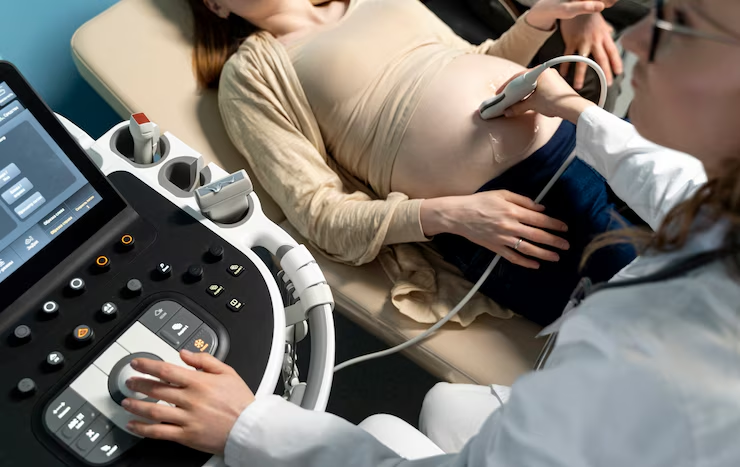
Report Overview
The global fetal monitoring market is positioned for steady growth, advancing at an estimated CAGR of nearly 7% in the coming years as healthcare systems worldwide place greater emphasis on prenatal care, maternal safety, and better clinical outcomes. Fetal monitoring refers to the structured assessment of a fetus during pregnancy and labor through tools that track heart rate, oxygenation, movement patterns, and other physiological parameters.
Get Free Sample Report: https://meditechinsights.com/fetal-monitoring-market/request-sample/
These solutions allow clinicians to detect early warning signs of fetal distress, evaluate the need for medical intervention, and ensure timely decisions that support safe delivery outcomes. The increasing demand for fetal monitoring solutions is primarily driven by the rising prevalence of high-risk pregnancies, continuous innovation in monitoring technologies, government initiatives to reduce neonatal mortality, rising birth rates in developing regions, and the accelerating global adoption of non-invasive fetal monitoring methods. A fetus’s heart rate typically ranges from 110 to 160 beats per minute and fluctuates depending on uterine conditions and fetal activity. Any abnormal pattern, such as bradycardia, tachycardia, or late decelerations, may indicate complications like reduced oxygen supply, necessitating immediate assessment and potentially emergency procedures, including C-section delivery. Modern fetal monitoring technologies offer advanced insights into these patterns, supporting healthcare providers with real-time information that can influence dosage adjustments, labor induction decisions, and surgical interventions.
Rising Incidence of High-Risk Pregnancies Driving Market Growth
Increasing rates of high-risk pregnancies worldwide have significantly elevated the need for reliable, accurate, and continuous fetal monitoring solutions. High-risk pregnancy is characterized by conditions that may threaten the health or life of the mother or fetus, necessitating more frequent checkups, advanced diagnostic tests, and specialized monitoring throughout pregnancy and childbirth. Several medical conditions contribute to high-risk pregnancies, including diabetes, chronic hypertension, thyroid disorders, obesity, autoimmune diseases, psychiatric conditions, genetic disorders, and complications from previous pregnancies such as preeclampsia or preterm birth. Multiple gestation pregnancies, which are becoming more common due to fertility treatments and advanced maternal age, also fall under the high-risk category and require intensive monitoring. Hypertension in pregnancy, particularly preeclampsia, is among the leading contributors to fetal complications due to its negative impact on placental blood flow. Without timely detection, this condition can lead to restricted fetal growth, placental abruption, and increased risk of maternal and neonatal mortality. As these medical conditions continue to rise, healthcare practitioners rely heavily on fetal monitoring technologies—including cardiotocography (CTG), Doppler ultrasound, non-stress tests (NST), and biophysical profiles—to gather accurate physiological information and guide clinical decisions. The global rise in advanced maternal age also contributes significantly to high-risk pregnancies, intensifying the need for modern fetal surveillance tools. These factors collectively strengthen the market demand for advanced fetal monitoring systems that offer precision, reliability, and early detection capabilities.
Technological Advancements Boosting Market Expansion
Technological progress in fetal monitoring devices remains one of the strongest catalysts for market expansion. Historically, fetal monitoring depended on intermittent auscultation through simple tools like the Pinard horn, limiting the ability to detect real-time complications. Modern innovations have transformed prenatal care, enabling both continuous and non-invasive fetal assessments that enhance accuracy while improving patient comfort. Electronic fetal monitoring (EFM) has become widely adopted across maternity care settings, allowing clinicians to monitor fetal heart rate (FHR) and uterine contractions simultaneously. This technology enables rapid detection of distress, facilitates timely intervention, and reduces risks associated with complications such as hypoxia, birth asphyxia, cerebral palsy, and neonatal seizures. Additional technological advancements include fetal pulse oximetry (FPO), which provides insights into fetal oxygen saturation levels, supplementing the information captured through EFM. Monitoring fetal brain activity is another emerging frontier, with fetal electroencephalography (fEEG) enabling early identification of potential neurological issues. These innovations enhance clinical decision-making and support preventive care strategies that reduce maternal and fetal complications. The integration of artificial intelligence, machine learning, and predictive analytics into fetal monitoring technologies is revolutionizing maternal-fetal medicine. AI-enabled devices can analyze large volumes of fetal heart rate data, identify subtle abnormalities, and predict complications earlier than traditional monitoring methods. Remote fetal monitoring—powered by wearable sensors, IoT connectivity, and smartphone-based platforms—is gaining traction, especially in underserved regions where access to hospitals may be limited. These technologies enable real-time data transmission, allowing healthcare professionals to offer continuous oversight and timely guidance. Together, these advancements are accelerating the adoption of modern fetal monitoring devices and reshaping the future of prenatal care.
Competitive Landscape Analysis
The global fetal monitoring market includes a diverse mix of well-established companies and innovative emerging players such as Becton, Dickinson and Company; Biolight Medical; Cardinal Health; DOTO Health; EDAN Instrument; FUJIFILM Holdings Corporation; GE Healthcare; Huntleigh Healthcare (Arjo); Koninklijke Philips; Medtronic; Natus Medical Incorporated; Siemens AG; Neoventa Medical AB; MedGyn Products, Inc; and Mindray Medical. Companies focus on strategies such as new product launches, partnerships with hospitals and prenatal clinics, development of AI-integrated solutions, and geographic expansion to strengthen their competitive advantage.
Market Drivers
Rising incidence of high-risk pregnancies
Technological advancements in fetal monitoring devices
Government initiatives to reduce infant mortality rates
Rising birth rates in emerging markets
Growing adoption of non-invasive monitoring techniques
Attractive Opportunities
Technological advancements in ultrasound and high-resolution imaging
Rising adoption of cloud-based & data analytics solutions
Growing demand for AI & IoT-enabled monitoring
Key Request a free sample copy or view report summary: https://meditechinsights.com/fetal-monitoring-market/request-sample/
About Medi-Tech Insights
Medi-Tech Insights is a healthcare-focused business research & insights firm. Our clients include Fortune 500 companies, blue-chip investors & hyper-growth start-ups. We have completed 100+ projects in Digital Health, Healthcare IT, Medical Technology, Medical Devices & Pharma Services in the areas of market assessments, due diligence, competitive intelligence, market sizing and forecasting, pricing analysis & go-to-market strategy. Our methodology includes rigorous secondary research combined with deep-dive interviews with industry-leading CXO, VPs, and key demand/supply side decision-makers.


















